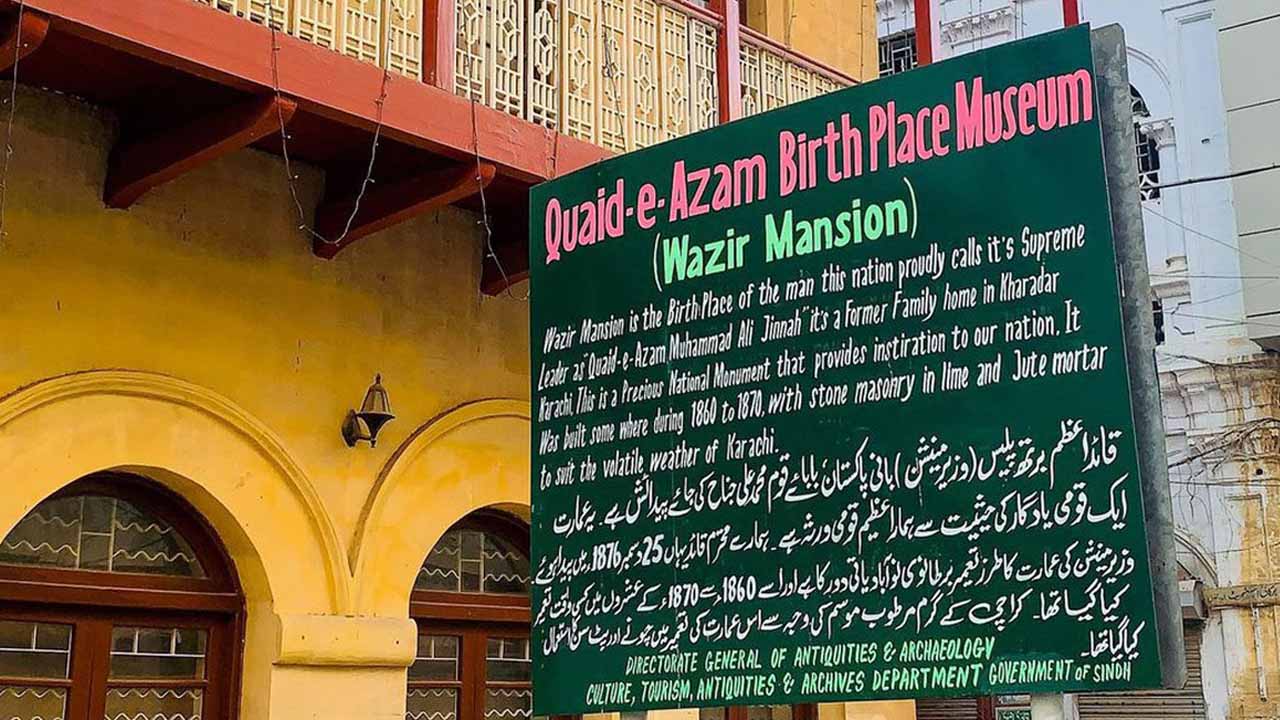Many people know that Muhammad Ali Jinnah spent his final days at the Ziarat Residency in Balochistan, and hundreds of people visit his tomb, Mazar-e-Quaid, in Karachi every day, but few can say for sure where he was born.
Just a few miles from Jinnah’s tomb is the three-story Wazir Mansion, which is located in a residential neighborhood and tucked away in a little street on Karachi’s Newnham Road.
From 1937 until August 14, 1947, when Pakistan got independence, Jinnah, who is regarded as the nation’s founder, headed the fight for a separate homeland for the Muslims of the British-ruled Indian subcontinent. Wazir Mansion received official recognition as Jinnah’s birthplace in 1953. Up until his passing in 1948, he was the first governor general of the republic.
The house’s information board states that it was constructed between 1860 and 1870 using stone masonry and lime and jute mortar to accommodate Karachi’s unpredictable weather. “Our country finds inspiration from this priceless national landmark.”
Although there is dispute over whether Wazir Mansion was Jinnah’s actual birthplace—some people think he was born in Jhirk, a small town in the Thatta district, more than 150 kilometers from Karachi—the building’s caretaker, Muneer Hussain, claimed the framework contained the exact room “where Jinnah was born.”
Hussain claimed that when Jinnah’s father, Jinnahbhai Poonja, came to Karachi from Mumbai to start a business, he decided to locate it on Newnham Road, which was at the time a busy steel trading route. On December 25, 1876, Jinnah was born in Wazir Mansion, where he rented an apartment.
He said, “Seven of Jinnah’s siblings were also born in this building.” “We receive between 1500 and 2000 visitors each month, primarily students, and I want this number to double because this tiny structure has altered the face of the planet.”
Dr. Kaleemullah Lashari, an archaeologist and historian, refuted theories that Jinnah was born in a different city.
Jinnah said, “It gives me enormous pleasure to stand here in front of you and tell you that I was born in Karachi,” which he then quoted from a speech. Lashari asserts that Jinnah’s actual birthplace was a structure that was located behind Wazir Mansion.
According to Lashari, Jinnahbhai was living in the area of the property that was behind the Wazir Mansion.
So, the structure behind it is the reason that Wazir Mansion isn’t recognized as Jinnah’s birthplace by scholars. Since the Wazir Mansion, the current structure there, was really constructed after 1880, Jinnahbhai was occupying the portion of the property that was behind it.
Even if the difference is negligible, the scholar said that it was just as significant as other aspects of Jinnah’s legacy and life. “It is very significant [to know where Jinnah was born] but I tell you, not only the birthplace but every aspect of his life is significant and important,” the scholar said. “And there is need that attention is paid to the studies on his life and his works.”






